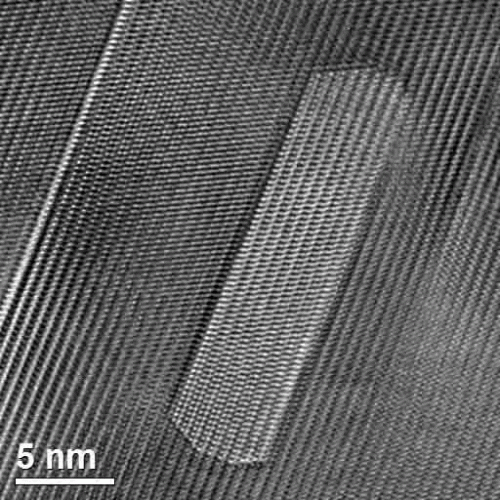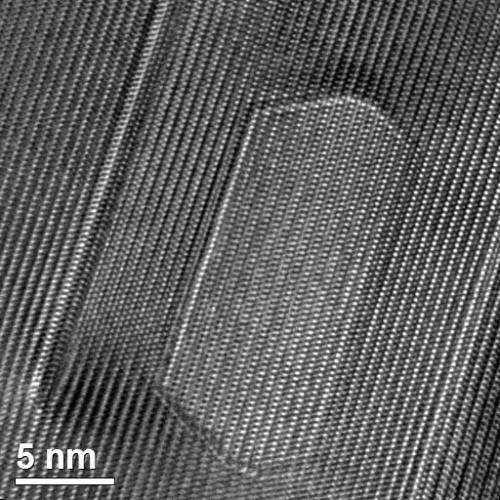New technique allows closer study of how radiation damages materials

A team of researchers led by North Carolina State University has developed a technique that provides real-time images of how magnesium changes at the atomic scale when exposed to radiation. The technique may give researchers new insights into how radiation weakens the integrity of radiation-tolerant materials, such as those used in space exploration and in nuclear energy technologies.
"We used high-resolution transmission electron microscopy (HRTEM) to simultaneously irradiate the magnesium and collect images of the material at the atomic scale," says Weizong Xu, a Ph.D. student at NC State and lead author of a paper describing the work. "It is a new way to use an existing technology, and it allowed us to see voids forming and expanding in the material.
"Prior to this, we knew radiation could cause voids that weaken the material, but we didn't know how the voids formed," Xu says. Voids are physical gaps in materials that begin at the atomic level and can cause a material to swell or crack.
The researchers looked at magnesium for two reasons. First, magnesium's atoms arrange themselves into tightly packed layers in a hexagonal structure.
"This is important, because many radiation-tolerant materials have the same structure – including zirconium, which is widely used in research on radiation-tolerant materials such as those used in nuclear power plants," says Dr. Suveen Mathaudhu, a co-author of the paper and adjunct assistant professor of materials science and engineering at NC State under the U.S. Army Research Office's Staff Research Program.
The second reason they chose magnesium is because it takes less energy to cause void formation in magnesium than in other materials with similar structures, such as zirconium. This lower energy threshold is what allowed researchers to use HRTEM to trigger void formation and capture atomic-scale images of the process with the same microscopy beam.

"You couldn't use this technique on zirconium, for example," Mathaudhu says. "But what we're learning about void formation gives us insight into how radiation damages these kinds of materials.
"In addition to any energy applications, we need to develop new radiation-tolerant materials if we want to explore deep space," Mathaudhu says. "This may move us one step closer to that goal."
"If we can improve our understanding of the mechanisms behind void formation, we can begin developing materials to control the problem," says Dr. Yuntian Zhu, a professor of materials science and engineering at NC State and senior author of the paper.
More information: The paper, "In-situ atomic-scale observation of irradiation-induced void formation," was published online Aug. 5 in Nature Communications. www.nature.com/ncomms/2013/130 … full/ncomms3288.html
Abstract
The formation of voids in an irradiated material significantly degrades its physical and mechanical properties. Void nucleation and growth involve discrete atomic-scale processes that, unfortunately, are not yet well understood due to the lack of direct experimental examination. Here we report for the first time in-situ atomic-scale observation of the nucleation and growth of voids in hexagonal close-packed magnesium under electron irradiation. The voids are found to first grow into a plate-like shape, followed by a gradual transition to a nearly equiaxial geometry. Using atomistic simulations, we show that the initial growth in length is controlled by slow nucleation kinetics of vacancy layers on basal facets and anisotropic vacancy diffusivity. The subsequent thickness growth is driven by thermodynamics to reduce surface energy. These experiments represent unprecedented resolution and characterization of void nucleation and growth under irradiation, and might help with understanding the irradiation damage of other hexagonal close-packed materials.
Journal information: Nature Communications
Provided by North Carolina State University




















